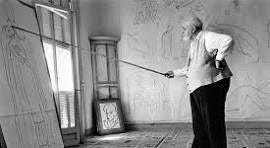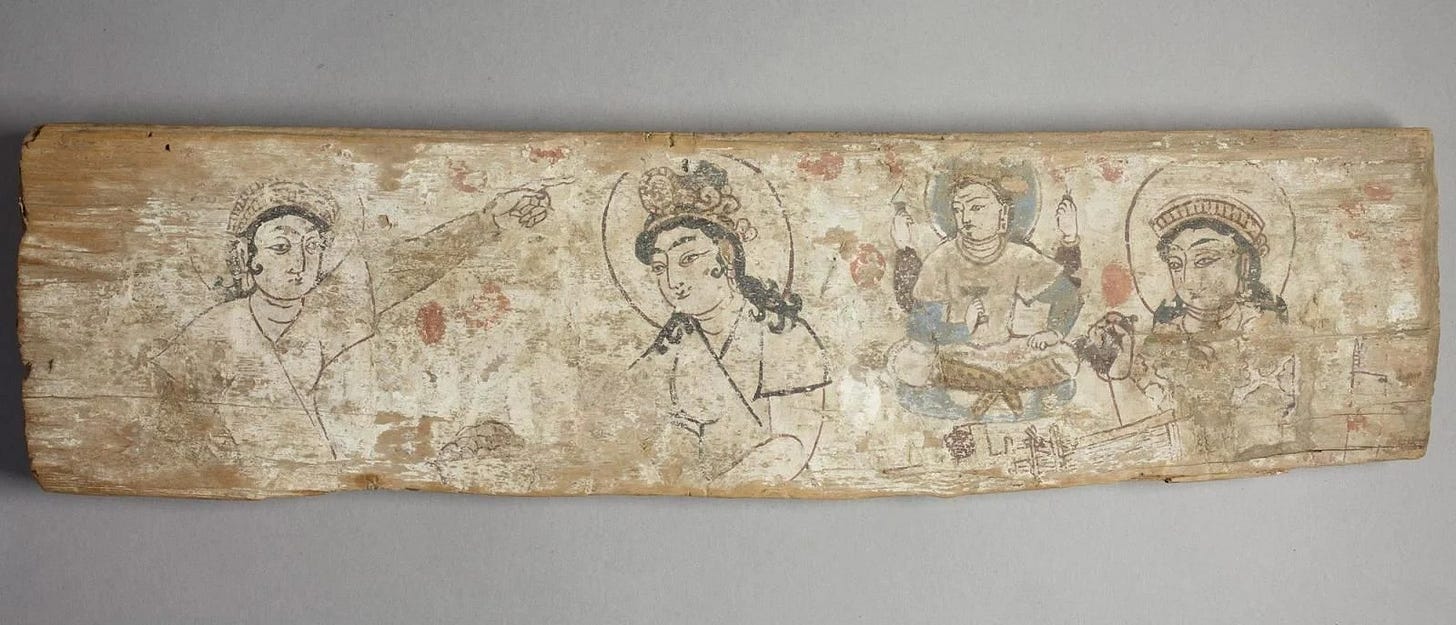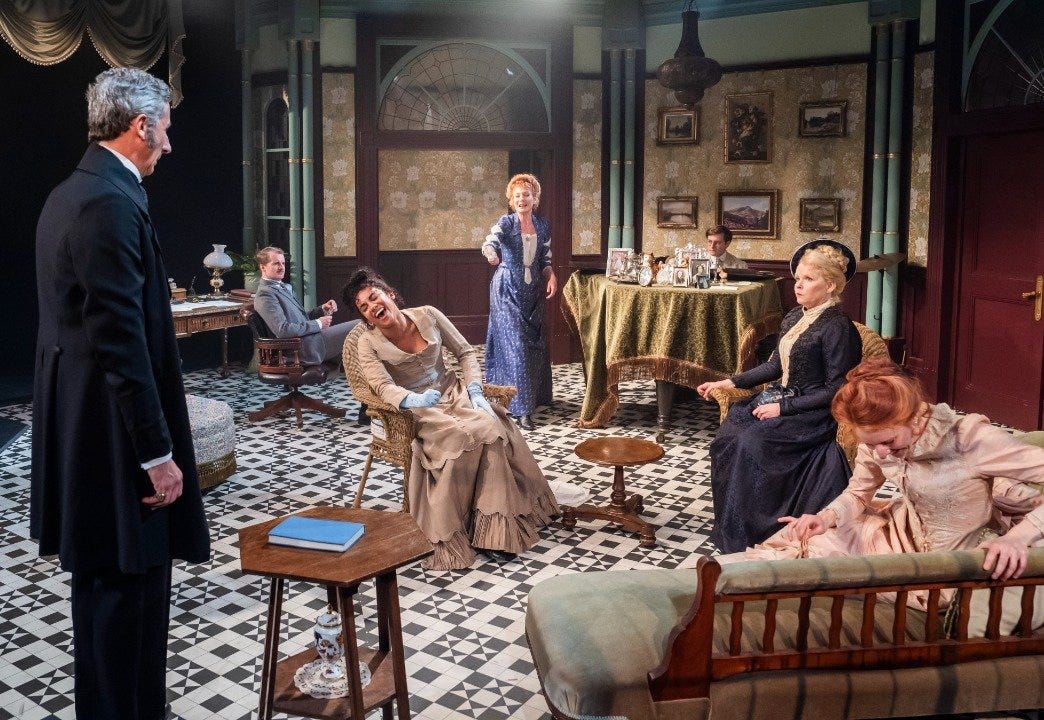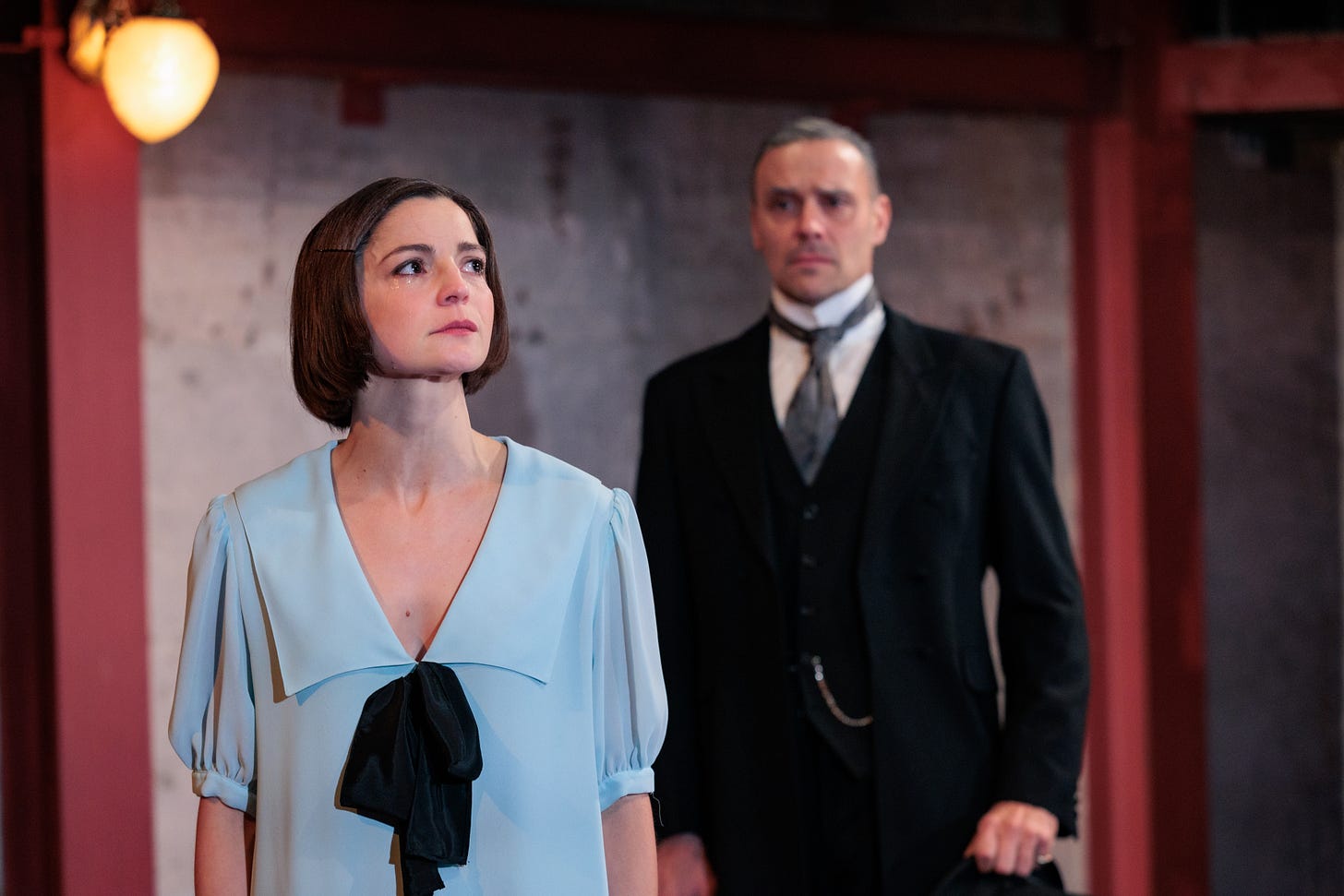Good morning and welcome to Ruth Leon’s Theatrewise
I notice that my name does not appear on the list published this week in New York Magazine of “The 47 Most Powerful People in Media”. An oversight, surely? Ah well, this disappointment must be designed to make me try harder.
Undaunted, out of sheer spite on my part, Ruth Leon’s Theatrewise this week doesn’t include any of those who did make the list. It does include some online gems. The artist Henri Matisse died 70 years ago this week and we take a fleeting but informative look at his life and work.
We’ve heard of the Silk Road, that pathway through the ancient world that brought us many of the goods we use today but now there’s Silk Roads, an exhibition at the British Museum, which tells stories about the vast reach of international commerce and ideas including one lovely legend about a princess and how, through her, silk production got started in China.
There’s a terrifying production of Macbeth and an array of videos from an assortment of diverse dance companies. There’s also a tiny clip of the most famous chorus in the world working hard with hammers and mallets.
And I’ve reviewed two recent theatre openings in London – The Cabinet Minister and The Forsyte Saga.
You can access all the online offerings just by clicking on the links below the pictures.
Patrick Stewart’s Macbeth
Click here to subscribe
After 30 years of theatre-reviewing, some years ago I made a decision that I didn’t need to see any more Hamlets, Lears, R&Js, or Macbeths in my life, I’d seen enough. I would still draw nourishment from the Comedies, the Histories and the other Tragedies, but, no, those icons had taught me what I could learn from them and could now safely be retired from my theatre experiences.
And then I saw, for professional reasons, this Macbeth, with Patrick Stewart starring in this gripping cinematic adaptation of Shakespeare’s blood-soaked tragedy, transplanted into a contemporary world. And it knocked me out. It stood on its head every other production I had seen of what is quaintly known as “the Scottish play” and reminded me of what a chump I was to think that I had nothing left to learn about this shortest of Shakespeare plays.
Director Rupert Goold relocates it to the oppressive atmosphere of Nicolae Ceaușescu’s Romania, drawing parallels between the ruthless dictator and Macbeth’s insatiable lust for power. The Three Witches are reimagined as hospital nurses, their spectral presence underscoring the horror of Macbeth’s murderous reign.
Shot on location in the eerie underground labyrinth of Welbeck Abbey, Nottinghamshire, this film is based on the Tony Award-winning stage production starring Sir Patrick Stewart that captivated Broadway audiences and critics. Kate Fleetwood reprises her chilling portrayal of the manipulative Lady Macbeth.
If this Macbeth doesn’t knock your socks off, blame me. And, of course, as you saw in last week’s Ruth Leon’s Theatrewise, it sent me back to garner new insights from the other masterpieces as well.
Henri Matisse in 60 seconds – Royal Academy
Click here to watch
This Sunday will mark 70 years since the death of the French Modernist artist, Henri Matisse. His work spanned over half a century and developed from Impressionism to Fauvism and further through Modernism.
Matisse is commonly regarded, along with Picasso and Marcel Duchamp, as one of the three artists who helped to define the revolutionary developments in the plastic arts in the opening decades of the 20th century, responsible for significant developments in painting and sculpture.
Here is a lightening fast introduction to Matisse and his work from Tim Marlow at the Royal Academy.
Jacob’s Pillow Video Stream
Click here to register
Jacob’s Pillow, the Dance Festival in the Berkshires, is making available, free, performances from this past summer. Just register and check out each of these company dances.
First up is Dancers of Damelahamid which is streaming November 1 – 22, 2024. Check the video page for dates for the other companies on offer. When you sign up to register you will receive regular reminders of available videos. Don’t miss this opportunity to enjoy the many different kinds of dance experiences from the Pillow.
Silk Roads - British Museum - Smuggling Secrets
Click here to watch
Camel caravans crossing desert dunes, merchants trading silks and spices at bazaars – these are the images that come to mind when we think of the Silk Road. But the reality goes far beyond this.
Rather than a single trade route from East to West, the Silk Roads were made up of overlapping networks linking communities across Asia, Africa and Europe, from East Asia to Britain, and from Scandinavia to Madagascar.
The British Museum currently has a major exhibition which unravels how the journeys of people, objects and ideas that formed the Silk Roads shaped cultures and histories between about AD 500 to 1000.
It highlights objects from Uzbekistan and Tajikistan that have never before been seen in the UK in this continent-spanning story.
Crossing deserts, mountains, rivers and seas, the Silk Roads tell a story of connection between cultures and continents, centuries before the formation of the globalised world we know today.
Luk Yu-ping, one of the exhibition's curators, tells one of these stories, this one about a legendary princess who brought the secrets of silk-making to her new kingdom.
At some point around AD 600-700, there was a princess who sneaked mulberry tree seeds and silkworm eggs into the Buddhist kingdom of Khotan (present-day northwest China) in her headdress. She crossed the border, married the king, introduced sericulture to her new kingdom, guaranteed that her wardrobe was continually updated with fresh silk robes and eventually became a venerated figure of near-saintly status - not bad for a single day's smuggling?
Join curator Luk Yu-ping for a journey along the legendary Silk Roads.
Anvil Chorus – Il Trovatore – Met Opera Chorus
Click here to watch
Here’s a tiny, 30-second clip of one of the most famous choruses in all of opera – the Anvil Chorus from Il Trovatore.
Those guys are really working hard and singing at the same time. Did they imagine, back when they were studying opera at the Conservatoire, that they’d end up half-naked and bashing at steel anvils in public?
Pocket Review
The Cabinet Minister – Menier Chocolate Factory
If you’re looking for a really good evening in the theatre, I can do you no greater favour than to point you towards Southwark where Arthur Wing Pinero’s 1890 comedy The Cabinet Minister is triumphantly holding the stage at the Menier Chocolate Factory.
My companion and I were both feeling sorry for ourselves on the rainy evening last week when we took our seats in the Choc Factory but we soon cheered up. An amazing array of our best actors – Nancy Carroll, Sara Crowe (why that woman isn’t a household name I’ll never know), Nicholas Rowe, a host of others and our own national treasure, Dillie Keane, take an almost forgotten English farce about the class system and turn it into a polished romp which would lift the spirits of the most jaded or downtrodden audience member.
Leading player Nancy Carroll has herself adapted this Victorian play, taken out all the creaks, and made Pinero’s dialogue sound sparkling and fresh.
She plays the cabinet minister’s wife who has overspent her allowance and has to make unwelcome concessions to her dressmaker while her darling son has run up equally unmanageable gambling debts. Her husband is at risk of losing his cabinet position for “accepting favours” (sound familiar?) and his darling daughter is unwilling to solve the family’s financial crisis by marrying a tongue-tied Scottish laird, son of a hilarious harridan who speaks for him in an impenetrable but imperious foghorn. That’s Dillie Keane, having the time of her life.
The rest of the plot and characters are many and varied but all carefully balanced so that parallels with our own current political tangles are obvious but tactfully not hit on the head.
Pinero is not Wilde but the loving care which has gone into this production, directed by Paul Foster, and designed by the scrupulous Janet Bird, is demonstrated in every line and movement.
Just as an aside, the current fashion for stripped-down revivals where the actors perform without sets or costumes or props, in time-neutral stagings, in featureless surroundings, is clearly given the lie by this production’s classic and historically correct Victorian setting. And it’s more relevant and much more fun because of it.
The Forsyte Saga – Park Theatre
Having said that, the stripped-down production of The Forsyte Saga at the Park works very well. The actors perform on an empty stage, only their costumes and dialogue indicating the passage of time as they move from the Victorian era to post-WW1 England to reflect the Saga’s span of 1886-1927.
The Forsyte Saga, long though it is, is a snapshot of one class of English society, reflecting its history and character and how it shifted in the periods it highlights.
The gargantuan task of adaptimg John Galsworthy’s nine-novel soap opera of English family life into the two plays currently being performed in repertory at the Park fell to Shaun McKenna and Lin Coghlan. This was a logical choice as the pair had already adapted them into a multipart series for BBC Radio.
Most of us had already met the Forsytes in 1967 and in 2002 when the marriages, business dealings, property and extra-marital adventures of this rich English family were adapted for television, so there is not much new to glean from this stage version except the new twist we get by looking at characters we thought we knew through a fresh eye.
Interestingly, the adaptors agreed that, although Galsworthy’s concentration had been emphatically on Soames Forsyte and the other male characters, their adaptation would take its direction from the women in the novels, most notably Irene and Fleur, who is the narrator in both plays.
Part One covers the period 1886-1902, Part Two takes in 1920-1927. You can book for one or the other or both. I saw both in one day and was glad not to have missed the stories in either play.
The plays are crosscast with only Joseph Millson’s excellent Soames, Fiona Hampton’s shadowy Irene and Flora Spencer-Longhurst's persuasive Fleur remaining in their original roles. Thanks to the skill and versatility of the actors and their director Josh Roche, we soon get used to characters we’ve met before when they appear in older incarnations or even in a completely different body, so that when Emily Forsyte (Emma Amos) in the first play becomes June Forsyte, and then Holly Forsyte late in the second, we accept it because we are by then into the characters, however they appear.
This is a workmanlike and worthy production, not very exciting but, then, the Forsytes in Galsworthy’s books aren’t very exciting. They’re just there, symbols and emblems of an England that, if it hasn’t completely disappeared, has transmogrified into something quite different.
I hope you enjoy all this week’s events and videos. There will be more next week so come back. And if you come across anything that should be included in Ruth Leon’s Theatrewise, please don’t keep it to yourself.
I wish you a very good week,
Ruth













Always fascinating
Helpful and generous round up
Big thank you .